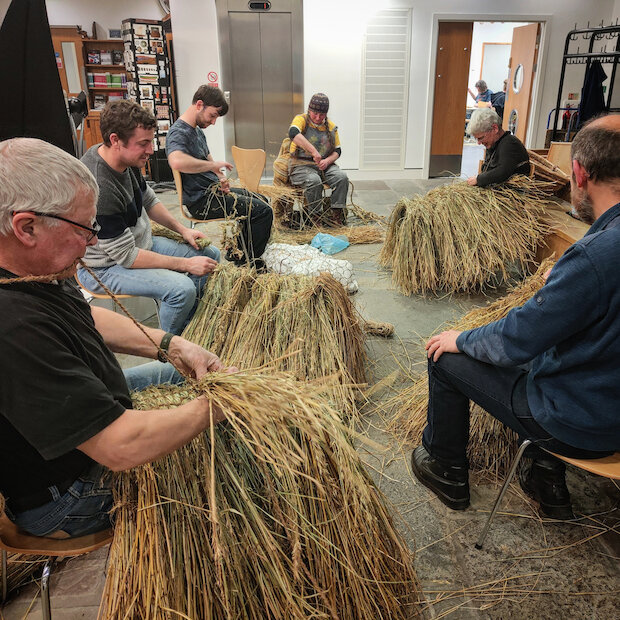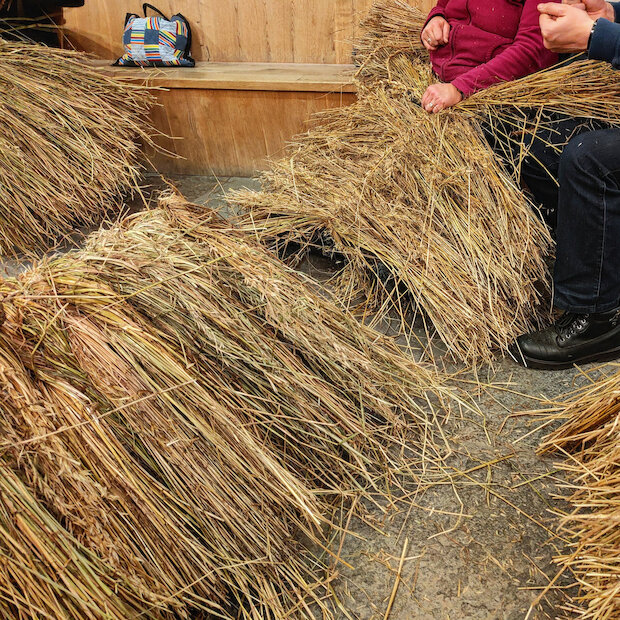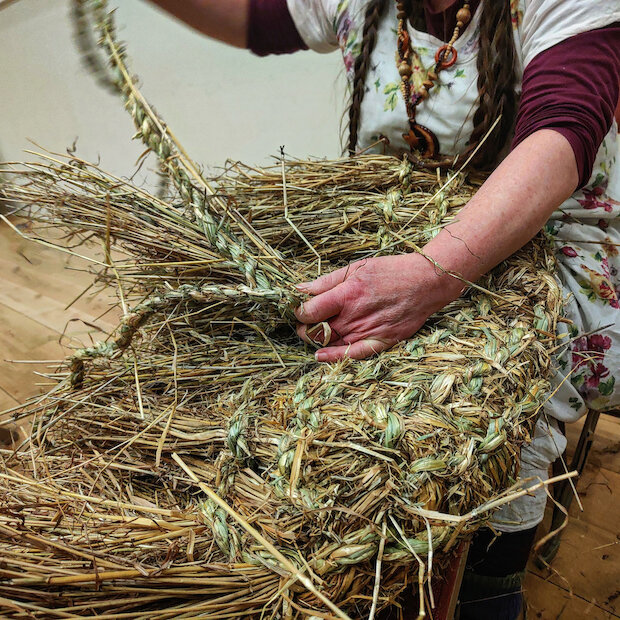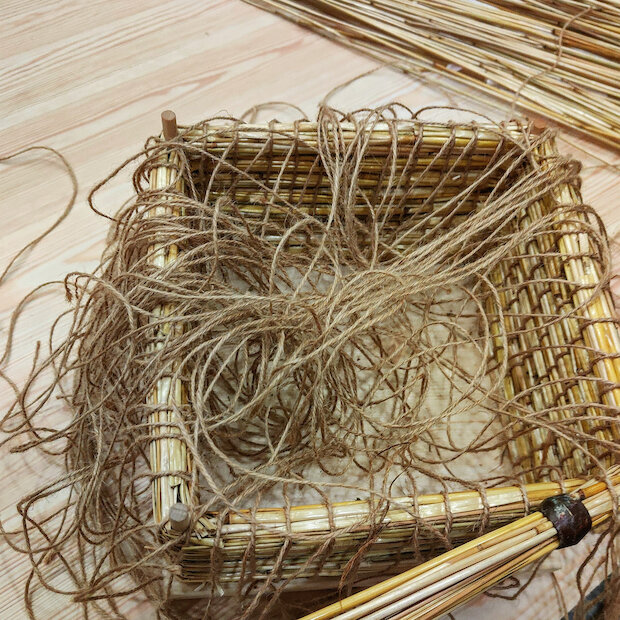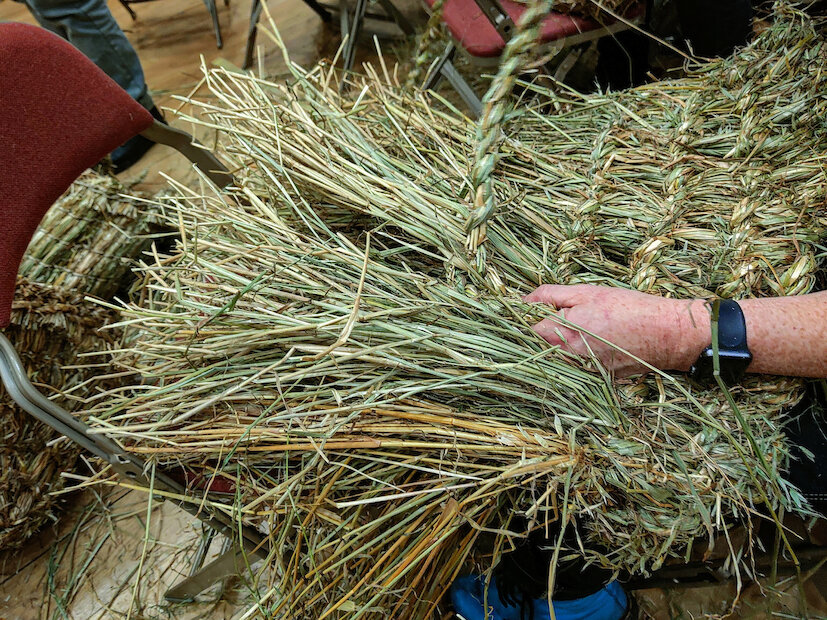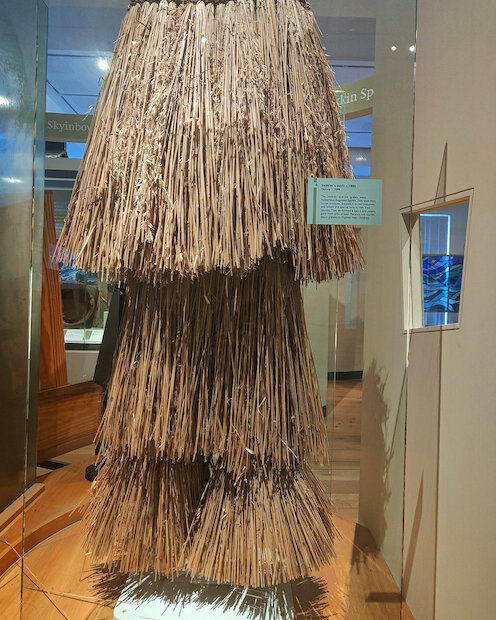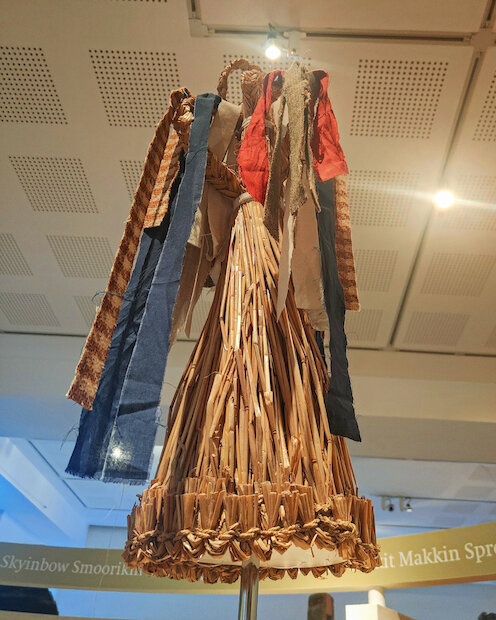Having researched the history of Shetland native breeds for my PhD I was familiar with kishies – kishie is the dialect word for a straw basket or creel.
People often showed me old photographs of lines of ponies, with straw baskets on their sides, bringing home the peat that was a croft’s only source of winter fuel. An iconic story of heat, light, survival and hope. Although such pictures of peat carrying have become one of the most familiar images of Shetland history, they are only one example of straw work.
For much of the archipelago’s history, crofters needed to be incredibly self-sufficient, producing almost everything they needed to survive. With few areas of cultivatable ground and little shelter from salt-laden winds, the environment posed significant difficulties. It was from these challenges that Shetland’s unique straw weaving tradition emerged.
People used the materials they could find in the environment around them to craft kishies, bait bags, fish baskets, chair backs, fowling traps, and to build roofs. Although straw from crops like oats was among the most common material for weaving; floss, heather and marram grass were all used. With changing economies imported goods began to replace these crafts in people’s everyday lives. Over time, skills that would once have been essential to survival began to be forgotten.
